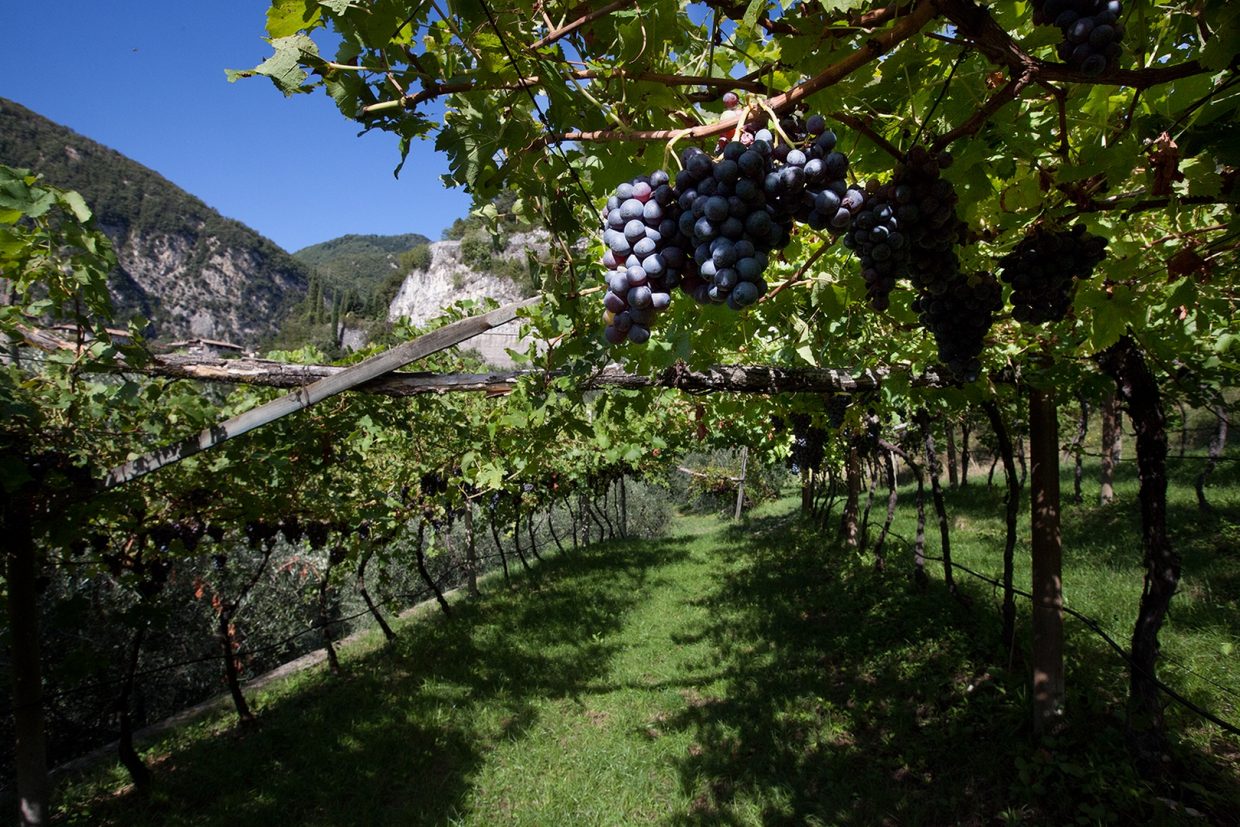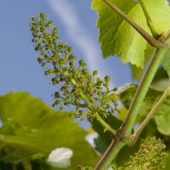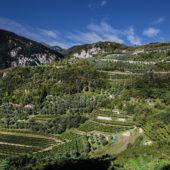Vineyards and terroir
The importance of the terroir is essential since it is traceable and recognizable in the wine produced in that specific area.
On the strength of land’s peculiarities on which a vineyard grows, its products, the fruits and thereby wines would be its expression.
Our region is mountain, so the ground results light and little prolific. The weaving of the land, that consists in the percentage composition of sand – silt – clay, it is rich in the sandy element. Moreover is turns out to be generally little deep (30 – 50 cm max) and as skeleton, that is the unrefined and sandy part (diameter > 2 mm) very rich.
The wines are, thereby, suitable to be very balanced in the alcoholic and phenolic component, with tasteful and precious scents. The wines are fresh and ready to be drunk soon after from the grape harvest and don’t need long ageing.
From a climatic point of view, since the winery is located in a sub – Mediterranean area, the vineyards benefit of a mild climate throughout the year. During winter frosts are prevented, while in summer temperatures although hot don’t reach alarming levels that can provoke thermal stress to plants and fruits.
Peculiar feature of this area is the ventilation of air offered by two well-known winds:
Garda’s Ora and Pelèr.
These changes of air are provoked by convective motions created by the differences of temperature between masses of warmer air above the lake and those colder over Dolomiti mountains.
This situation makes the area particularly dry, without humidity and therefore fog. The plants’ healthiness takes advantages towards dangerous microorganisms such as late blight and botrytis that don’t find a propitious environment to proliferate.
The rainfall is in the average, therefore plants during summers can only advice water need but with the frequent storms in August it avoids to come up to manifest stresses, while the ground’s features prevent stagnation problems, likewise damaging.
From a landscape point of view our area needs some radical changes.
Terracings are a solution to make cultivable a ground which has a marked slope and it avoids erosion. They are big staircase-shaped delimited by dry stone wall. These allow better solar exposures, optimal ventilation and heat released from the walls’ rocks, which hold it back during the day and then influence the micro climate of plants and fruits.
Even the cultivation’s system reflects a regional typicalness, the “trentin pergola”. This system, in which the vegetation is organized in upwards sloping roof, has been conceived precisely for the viticulture in mountainous areas.
To keep the natural balance of plants and obtain healthy and ripe fruits, other operations are important. The combined fight, that is the use of environmental-friendly/low environmental impact techniques and productions and the focused and planned making of the row-spacing and the plot must support the auxiliary organisms, defend and increase the biodiversity, keep vital energies within the vineyards ecosystem and those bordering, from the small bird that nests in the shoots to the microorganism that swarm crowd in the plot’s hole.










